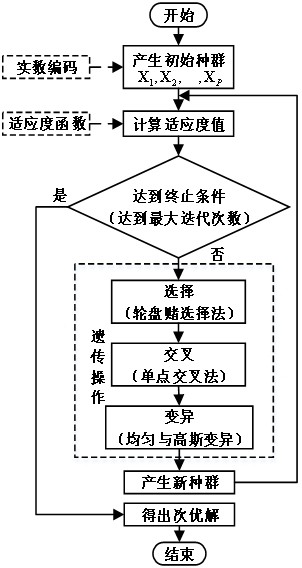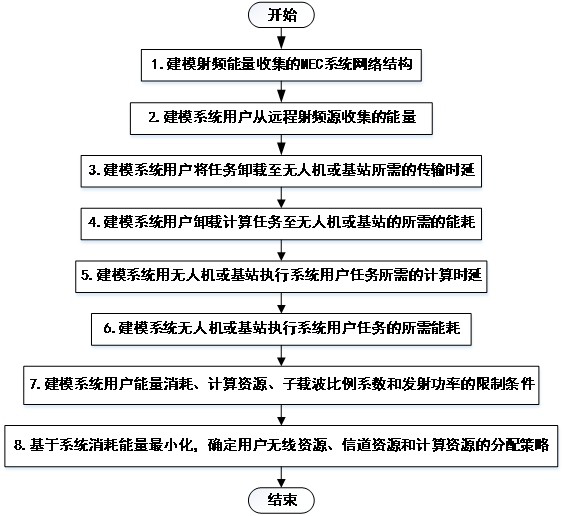Unmanned aerial vehicle assisted edge computing resource allocation method based on radio frequency energy collection
A technology of edge computing and radio frequency energy, applied in network traffic/resource management, mechanical equipment, wireless communication, etc.
- Summary
- Abstract
- Description
- Claims
- Application Information
AI Technical Summary
Problems solved by technology
Method used
Image
Examples
Embodiment Construction
[0070] The present invention will be further described below in conjunction with the accompanying drawings and embodiments.
[0071] Please refer to image 3 , the present invention provides a resource allocation method based on radio frequency energy harvesting of unmanned aerial vehicles to assist edge computing, comprising the following steps:
[0072] Step S1: build the MEC system network structure of radio frequency energy collection; figure 1 As shown, including UAV, base station BS1, base station BS2, user equipment and TV tower;
[0073] The edge server is deployed on the UAV and the base station BS1, which can provide users with MEC services. The base station and users are located on the ground, and the UAV is deployed near the base station BS1 at a fixed height H to assist the base station BS1 in processing user computing tasks.
[0074] Base stations BS1 and BS2 are powered by traditional power grids, and end users i (i=1, 2,...I) are equipped with energy harvest...
PUM
 Login to view more
Login to view more Abstract
Description
Claims
Application Information
 Login to view more
Login to view more - R&D Engineer
- R&D Manager
- IP Professional
- Industry Leading Data Capabilities
- Powerful AI technology
- Patent DNA Extraction
Browse by: Latest US Patents, China's latest patents, Technical Efficacy Thesaurus, Application Domain, Technology Topic.
© 2024 PatSnap. All rights reserved.Legal|Privacy policy|Modern Slavery Act Transparency Statement|Sitemap



